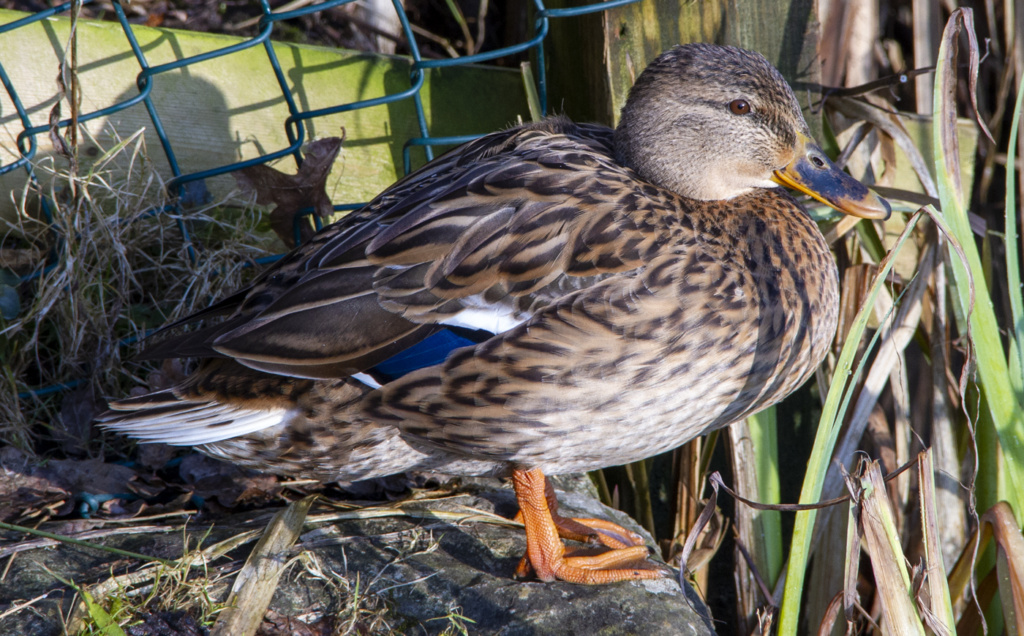Have you seen the bird of the month?
For September it is the: Mallard (Anas platyrhynchos)


Where can I find them?
They are common and can be found down at the Lake.
You may see them along the edge of the lake or in the lake enclosure area. If they are hungry, they may even walk up to you, looking to see if you have any food for them 😊
About the species
The Mallard is a large looking bird, with a long body and broad bill.
Males have a dark green head, a yellow bill, a mainly purple-brown breast and grey body. The female is mainly brown with an orange bill. Both have orange legs.
Most of their diet is plant material, including seeds, stems, and roots of a vast variety of different plants. They are also known to eat berries and acorns.
In the wild, Mallard Ducks live around five to ten years.
They spend time in and out of the water.
The species is on the UK amber list, meaning its population and conservation status is of moderate concern.
If you are visiting the reserve and would like to feed the ducks or wildfowl, please do not feed them with bread.

Food safe for the ducks includes:
• Birdseed (any type or mix)
• Chopped lettuce or other greens or salad mixes
• Chopped vegetable trimmings or peels
• Grapes (cut in half)
• Frozen peas or corn (defrosted, no need to cook)
• Rice (cooked or uncooked)
• Cracked corn, wheat, barley, oats, or similar grains
• Duck pellets
• Earthworms or Mealworms
What do they sound like?
Quack. The sound is of the female mallard. Females often give this call in a series of 2 to 10 quacks that begin loudly and get softer. Males do not quack and gives a quieter, rasping, one or two-noted call.
Where do they nest and what is the nest made from?
Mallards normally begin to pair up around October\November and will begin to build a nest in March. They prefer to nest near water and generally the female makes her nest in well covered vegetation. They are also known to nest in unusual places like wood piles, haystacks and even large flowerpots. If the area is abundant with other mallard ducks, females may nest well away from the lake\pond to avoid competition and harassment from others.

The female builds the nest from leaves and grasses and lines it with down plucked from her breast. A normal clutch size is about twelve eggs, laid at one to two days intervals. After each egg has been laid, the female covers the nest to protect it from predators.
If you find a nestful of duck’s eggs, leave it well alone as it is unlikely to have been abandoned. The laying of eggs is a very stressful time for the female, and she needs a lot of rest and leaves the nest at times.
Once the eggs have been laid the males role is almost over. He will gradually lose interest and leave the female to look after the ducklings once they hatch.
After hatching the ducklings will stay in the nest for at least 10 hours. During this time, they will dry and get used to using their legs.
Normally early in the morning, the female will then lead them to the water. If the nest is quiet far away from the water, their first journey can be the most perilous of their life.
Ducklings cannot survive without their mother and take 50 to 60 days before they become independent.

If you manage to photograph a Mallard Duck, within the reserve, why not share it on our Facebook page?




